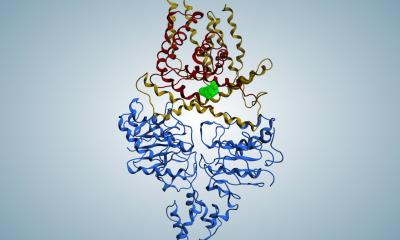Image source: CDC/Robert Denty
News • Trends for different bloodstream infections
AMR: age and sex identified as risk factors
A study of nearly one million people in 29 European countries found different trends for different bloodstream infections
Results were published in PLOS Medicine by Gwenan Knight of the London School of Hygiene and Tropical Medicine, UK, and colleagues.
Antimicrobial resistance (AMR), in which infections cannot be treated with antibiotics, is a major global public health threat. Little has been known about how the prevalence of resistance varies with age and sex even though antibiotic usage, changes in immune function, and exposure to high-risk settings are all linked to age and sex.
In the new study, researchers analyzed data collected as part of routine surveillance between 2015 and 2019 on bloodstream infections in 944,520 individuals across 29 European countries. The team looked at which bacterial species were isolated and sent to the surveillance service, and which antibiotics were used to treat the infections.
These findings highlight important gaps in our knowledge of the epidemiology of antimicrobial resistance that are difficult to explain through known patterns of antibiotic exposure and healthcare contact
Naomi R Waterlow, Ben S Cooper, Julie V Robotham, Gwenana Mary Knight
Distinct patterns in resistance prevalence by age were observed throughout Europe but varied across bacterial species. For most but not all bacteria, peaks in resistance were seen at the youngest and oldest ages. The occurrence of methicillin-resistant Staphylococcus aureus (MRSA) increased with age and the occurrence of aminopenicillin resistance in Escherichia coli decreased with age. Some antimicrobial resistance profiles peaked in middle-age; Pseudomonas aeruginosa was most likely to be resistant to several antibiotics around 30 years of age and, for women, the incidence of bloodstream infections due to E. coli peaked between ages 15 and 40. There were other important differences between sexes; in general, men had a higher risk of antimicrobial resistance than women.
“These findings highlight important gaps in our knowledge of the epidemiology of antimicrobial resistance that are difficult to explain through known patterns of antibiotic exposure and healthcare contact,” the authors say. “Our findings suggest that there may be value in considering interventions to reduce antimicrobial resistance burden that take into account important variations in antimicrobial resistance prevalence with age and sex.”
Recommended article

Article • Bacterial defense mechanism
Antibiotic resistance: a global threat to healthcare
Antimicrobial resistance (AMR) is becoming more prevalent around the world, constituting a serious threat to public health. When bacteria acquire resistance against antibiotics, common medical procedures – for example, in surgery – become impossible due to the high infection risk. Keep reading to find out about AMR research, development of new antibiotics and antibiotic alternatives.
The authors add, “Our findings, that the prevalence of resistance in bloodstream infections across Europe varies substantially by age and sex, highlights important gaps in our knowledge of the spread and selection of AMR. In order for us to address this growing threat to public health, we now need data from a wider range of sources to determine the contribution that cultural versus natural history differences have in driving these patterns globally and the role that they play in the increasing rates of AMR being seen.”
Source: PLOS
15.03.2024






